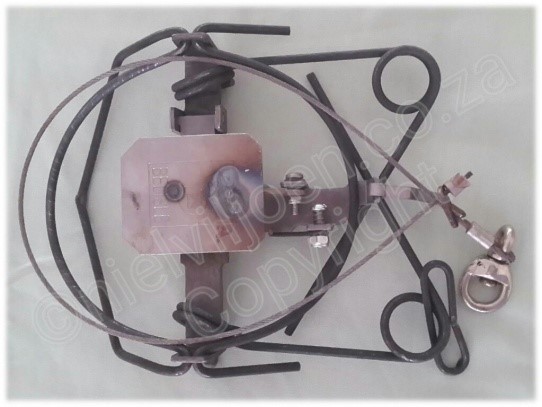Recently I had the opportunity to attend a five day trapping course presented by international trapper Albert Roura from Spain and his two partners from the USA.

The course was presented at the Cheetah Inn lodge and game farm in the Hoedspruit area, Mpumalanga, South Africa.

The main objective of the course was to introduce new trapping techniques and to demonstrate different traps, lures and bait used in other parts of the world. Moving away from the old gin traps with the metal jaws we were introduced to the rubber padded soft traps as well as the different snare types of traps. Much of the theoretical and practical work was spent with the introduction of the snares.

Two different ways of snare trapping is possible – either the neck hold snare (Collalrum) or the foot hold snare (Belisle). The normal walk-through snares are probably the most common but they are inhumane and cruel.
When we talk about snares, these snares deploy a metal device which must be calibrated to the specific weight of the target animal. The metal device is designed to physically put the snare around the leg of the animal before dropping off and leaving only the cable holding the animal. Therefore the trapper still needs to create an effective set-up away from trees and fences (the obstacles used for the walk-through snare, poaching) luring the specific target animal to the snare set. Like all snares these two types of snares also work with a cable that capture the animal either by the neck or the foot, with the difference from other snares that with both these snares the cable setting is done in such a way that the captured animal is not harmed. A stopper is calibrated according to the diameter of the neck or leg of the animal preventing it from suffocating or harming the leg by not preventing the blood flow to the foot.

Both snares also have a “break-off”/ “break-away” cable, meaning that when a bigger sized animal than the target animal is captured the “break-off” cable will break first, setting the animal free and ensuring the remaining cable will drop off. In the case of the leg hold snare, rubber isolation on the last section of the cable (the part holding the animal) can be attached. This rubber isolation prevents cable damage to the leg of the animal and can be released without any injuries.
After purchasing some of these traps they were put to the test on my farm in the South African conditions. Specifically targeting animals like the Black-Backed Jackal and Caracal that is responsible for the majority of livestock losses.

Field test results
The Collalrum for caracal:
I found the snare unsuitable for caracal. Firstly this snare use bait to trigger the snare and caracal is not a scavenger like Black-Backed jackal; secondly the reflexes of the caracal is too quick for this snare and lastly I think you do not want to capture a caracal around the neck.
The Collalrum for Black-Backed jackal:
I achieved minimal success with this snare. Mainly caught youngsters and one of the biggest disadvantages of this snare is that it works on the same principle as the coyote getter – the animal must pull on the bait before the snare is triggered. Black-Backed jackal is very clever when it comes to this, so for the best success rate the amount of actions required from the animal before triggering the trap must be as little as possible. In this case using the nose luring the animal to the trap site and asking to pull on something is asking a bit too much for the cleverest animal in Africa.
The foot hold snare for caracal:
I found the trap unsuitable because the trap is ejected from the ground to slowly (held back by the cable) for the fast reflexes of the caracal.
The foot hold snare for Black-Backed jackal:
Although a few animals were caught and released, one of the biggest disadvantages of the foot hold snare was revealed. When the jackal is captured and he twists the cable holding his leg once or twice the cable forms a kink which is unable to straighten out. Trying to undo the kink in the cable is impossible and making use of the same cable is unsuitable for future captures. Therefore maintenance on the foot hold snare is very high and expensive because new cables must be installed every time an animal was captured.
